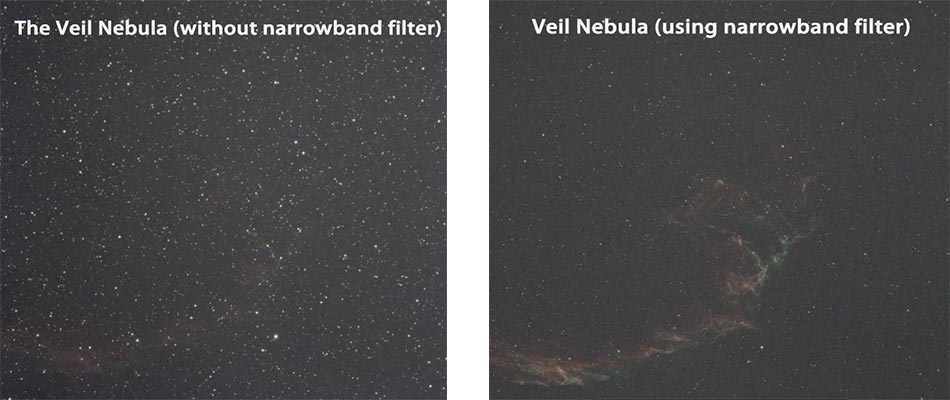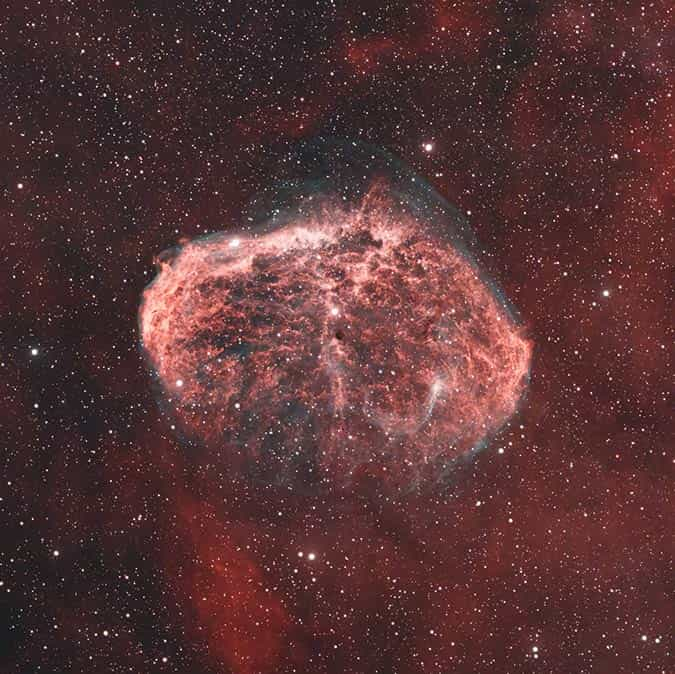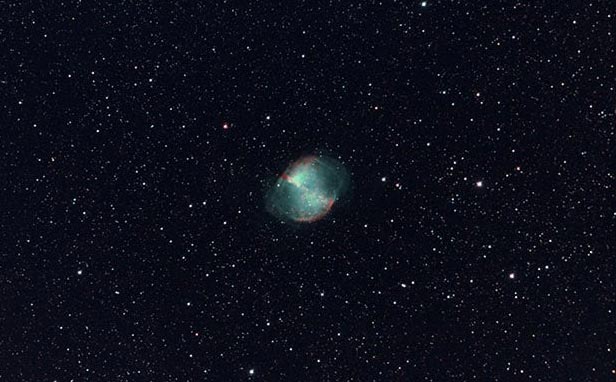Blog
Table of Contents

Light Pollution Filters for Urban Astrophotography
If you're shooting with an astrophotography camera in the city, a light pollution filter is likely to make your imaging process much smoother. No matter which astrophotography camera you use, filters will have a significant impact on the quality of your photos. Filters work by blocking specific wavelengths of light from artificial sources, such as street lamps, that are present in the visible spectrum. This helps improve image quality. The light pollution filters discussed in this article could be just what you need when doing urban astrophotography.
Why Use the Light Pollution Filter?
Light pollution filters are crucial for astrophotography in urban areas because they specifically target and block out the wavelengths of light from artificial sources like streetlights. This helps to reduce the bright, unwanted glow that often washes out faint celestial objects. By improving contrast, these filters allow you to capture more detail in deep sky objects, like nebulae and galaxies, that would otherwise be obscured by city lights.
Types of Light Pollution Filters
There are many different light pollution filters available on the market today. They vary significantly in their bandwidth, but light pollution filters for color cameras mainly come in two types: broadband filters and multi-narrowband filters (usually dual narrowband filters). For monochrome cameras, they typically use single narrowband filters or LRGB broadband filters.
One important function of narrowband filters is to suppress light pollution, allowing for the pure extraction of the emission nebula's spectrum while blocking the influence of all other light sources. Only key narrowband light in specific regions is allowed to pass through. These filters are ideal for capturing emission nebulae and supernova remnants. However, since stars near emission nebulae have continuous spectra, star points also become dimmer, leading to a "star shrinking" effect.

Broadband filters, on the other hand, are used to capture more natural images of objects in the night sky, such as galaxies, reflection nebulae, dark nebulae, and the natural colors of stars. However, they may allow a small amount of artificial light to pass through.
The type of camera you use for astrophotography will determine which light pollution filter you choose.
Narrowband Filters
- Mono cameras are typically paired with SHO narrowband filters, such as the SV605MC with the SV227 SHO narrowband filter set. During imaging, the filters are generally used in the SHO sequence (Hα, OIII, Hβ). After capturing the images, they are stacked and combined using post-processing software to produce a deep-sky image with rich detail and contrast.
Color cameras like the SV405CC/SV605CC are usually paired with dual narrowband filters like the SV220 (Ha , OIII) and multi-narrowband filter like the SV240 (Ha, OIII, H-Beta).
 The Crescent Nebula using the SVBONY SV220 by Tristan Petroskey.
The Crescent Nebula using the SVBONY SV220 by Tristan Petroskey.
🌌 SV220 is a fantastic choice for astrophotographers looking for quality results at an affordable price. It is a practical choice for either a modified or stock DSLR camera.It provides just the right balance to focus on bright stars accurately, especially when paired with a Bahtinov mask. Overexposed, bloated stars are effectively suppressed, reducing the need for tedious star reduction in post-processing.A standout feature of this filter is its ability to block nearly all moon glow, making it possible to capture emission nebulae even under a full moon.This is ideal for anyone looking to extend imaging sessions through lunar phases without sacrificing image quality.However, it’s important to note that this filter is designed specifically for Ha and OIII wavelengths, so it’s unsuitable for capturing reflection nebulae or galaxies.
Broadband Filters
Color cameras are typically paired with broadband filters like UCH, CLS, or SV260, mainly to reduce the impact of light pollution. The differences lie in the spectral range and cutoff depth, with performance generally correlating to price.
 The Dumbbell Nebula by Russell Hippert.
The Dumbbell Nebula by Russell Hippert.
- 🌌Here is a useful test image from Russell Hippert of the Dumbbell Nebula using the Svbony CLS filter from a Bortle Class 8/9 sky. Russell mentioned that his city does not currently have any lighting ordinance and that broad-spectrum intrusion from reflections is very high.
Broadband vs Narrowband
Use Broadband Filters For:
The Milky Way
Galaxies
Star Clusters
Reflection Nebulae
True-color images
Comets
Meteor Showers
The Moon
Use Narrowband Filters For:
Emission Nebulae
Planetary Nebulaea
Supernova Remnants
Narrow-band filters are specifically designed for photographing emission nebulae. If used to photograph continuous-spectrum objects such as galaxies, a lot of optical details will be lost.
However, narrowband filters can be used together with broadband filters to photograph galaxies. Because there are many emission nebulae in galaxies, this mixed use can enhance the details of galaxies and serve as icing on the cake.

Conclusion
Choosing the right light pollution filter depends on the type of camera you're using and the type of objects you're photographing. Narrowband filters excel in capturing emission nebulae and supernova remnants, while broadband filters are ideal for natural, true-color images of galaxies, star clusters, and reflection nebulae. With the right filters, urban astrophotography can produce stunning, high-quality results despite the challenges of light pollution.
Feel free to share your astrophotography photos!


There are no customer reviews yet . Leave a Reply !